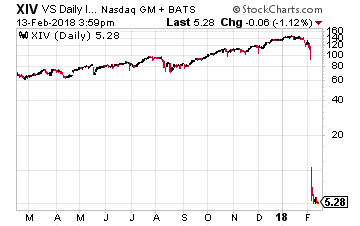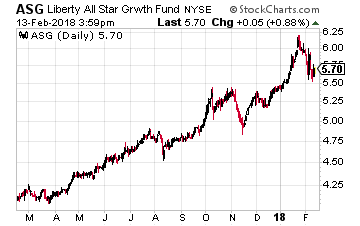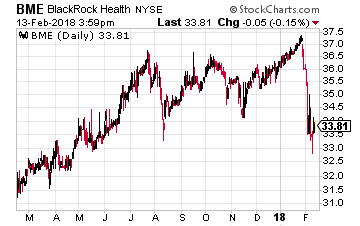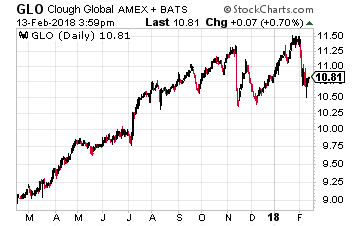I have long believed that the biggest threat facing cryptocurrency is government.
Most countries don’t appreciate competition from private markets when it comes to currency. Nearly all governments have operated with a central bank-controlled monopoly on money for a century or longer.
And after China shut down its domestic crypto exchanges and banned initial coin offerings (ICOs) last year, the fear was that other countries around the world would follow suit.
This regulatory risk factor has been stalking cryptocurrency markets ever since. It’s the No. 1 concern I hear about from our subscribers and other crypto enthusiasts.
Fortunately, we now have more clarity on this issue. In many countries where crypto trading is popular, discussion has shifted away from rumors of bans to talk about smart regulation.
In a U.S. Senate hearing this month, Commodity Futures Trading Commission Chairman J. Christopher Giancarlo was surprisingly upbeat about the future of U.S. crypto markets. Here’s a quote from the hearing…
“Do no harm” was unquestionably the right approach to development of the internet. Similarly, I believe that “do no harm” is the right overarching approach for distributed ledger technology… With the proper balance of sound policy, regulatory oversight and private sector innovation, new technologies will allow American markets to evolve in responsible ways and continue to grow our economy and increase prosperity.
You can read Giancarlo’s full written testimony here.
However, Giancarlo and Securities and Exchange Commission Chairman Jay Clayton struck a more cautionary tone about fraud in the market. They’ve already acted to stop a few cryptocurrency operations that were allegedly operating like Ponzi schemes.
Here’s an excerpt from a joint statement by Clayton and Giancarlo…
The CFTC and SEC, along with other federal and state regulators and criminal authorities, will continue to work together to bring transparency and integrity to these markets and, importantly, to deter and prosecute fraud and abuse. These markets are new, evolving and international. As such they require us to be nimble and forward-looking; coordinated with our state, federal and international colleagues; and engaged with important stakeholders, including Congress.
Similar developments are happening around the world. South Korea, a major crypto hub, has backed off a rumored ban on crypto trading. Government policy coordinator Hong Nam-ki said the following, as reported by Reuters…
The government’s basic rule is to prevent any illegal acts or uncertainties regarding cryptocurrency trade, while eagerly nurturing blockchain technology.
This is exactly what I’ve been hoping for. We need regulators to step up and prevent bad actors from tarnishing the industry.
Regulation has the potential to legitimize the nascent cryptocurrency markets. Done correctly, it would clear the path for institutional buyers to step in and rocket the market higher.
Of course, there’s still the risk that governments could reverse their opinions. But based on what we’ve seen so far, I would argue that this is the most positive development we’ve had in years.
I cannot overstate the importance of the clarity we’ve gotten on the government/regulatory risk situation.
This prospect of widespread bans has been a looming threat hanging over the crypto world. For now, that threat has passed.
Crypto Markets Rebound Strongly
With the biggest near-term threat to crypto largely overcome, markets have reacted to this bullish news appropriately.
During the low of the sell-off on February 6, bitcoin briefly dipped below $6,000. We last saw prices that low just before Thanksgiving 2017.
That same day, I sent out a note to First Stage Investor subscribers titled “Crypto Markets: Nearing a Bottom?”
In the alert, I noted the following…
We are reaching a retracement point where, historically, a bottom forms… So if you believe in the long-term fundamentals of cryptocurrency (as I do) and have been waiting for a chance to buy the dip, now seems a fine time to do so across our recommendations.
So far, it looks like we may have called it (near) the bottom. Bitcoin is trading back above $10,000 as I write this, with most altcoins following bitcoin’s lead.
I continue to believe we’ll see new all-time highs in crypto this year.
Here’s how I think about it: 99% of the world is still on the sidelines. And other than a handful of early institutional adopters, 99.99% of the professional investing world remains on the sidelines as well (venture capital funds, hedge funds, wealth managers, family offices, etc.).
There’s no question in my mind that the potential rewards still far outweigh the risks.
The difficult part remains holding through nasty corrections and buying the dips when it seems as if the crypto world is ending. If you can discipline yourself to do that, you’re well on your way to making money in crypto.
Good investing,
Adam
Can a $10 Bill Really Fund Your Retirement? The digital currency markets are delivering profits unlike anything we’ve ever seen. 23 recently doubled in a single week. And some like DubaiCoin have jumped as much as 8,200X in value in 18 months. It’ unprecedented... but you won’t receive any of the rewards unless you put a little money in the game. Find out how $10 could make you rich HERE.
Source: Early Investing


 But you may not have heard of the VelocityShares Daily Inverse VIX Short-Term ETN (Nasdaq: XIV). It aims to return the opposite of the VIX – and is one of the investments that Cramer says is responsible for the precipitous drop, due to uninformed speculators betting against volatility through investments they knew little about… and losing big.
But you may not have heard of the VelocityShares Daily Inverse VIX Short-Term ETN (Nasdaq: XIV). It aims to return the opposite of the VIX – and is one of the investments that Cramer says is responsible for the precipitous drop, due to uninformed speculators betting against volatility through investments they knew little about… and losing big. Liberty All-Star Growth Fund (NYSE: ASG): You want diversity? This fund has it – both by industry and asset class. For example, it has strong holdings in tech (28%), consumer cyclicals (18%), industrials (16%), healthcare (15%), as well as financials and real estate.
Liberty All-Star Growth Fund (NYSE: ASG): You want diversity? This fund has it – both by industry and asset class. For example, it has strong holdings in tech (28%), consumer cyclicals (18%), industrials (16%), healthcare (15%), as well as financials and real estate. BlackRock Health Sciences (NYSE: BME): From diversity to specificity. This fund focuses exclusively on healthcare, with most of the portfolio dedicated towards large-cap stocks like Pfizer, Merck, Gilead Sciences, Bristol-Myers Squibb, Amgen, Biogen, Celgene, and Johnson & Johnson.
BlackRock Health Sciences (NYSE: BME): From diversity to specificity. This fund focuses exclusively on healthcare, with most of the portfolio dedicated towards large-cap stocks like Pfizer, Merck, Gilead Sciences, Bristol-Myers Squibb, Amgen, Biogen, Celgene, and Johnson & Johnson. Clough Global Opportunities Fund (NYSE: GLO): As the name suggests, this fund offers a more global outlook, with around 22% of the portfolio containing non-U.S. stocks. This includes the likes of Samsung, Alibaba, Broadcom, and the Swiss-based CRISPR Therapeutics.
Clough Global Opportunities Fund (NYSE: GLO): As the name suggests, this fund offers a more global outlook, with around 22% of the portfolio containing non-U.S. stocks. This includes the likes of Samsung, Alibaba, Broadcom, and the Swiss-based CRISPR Therapeutics.